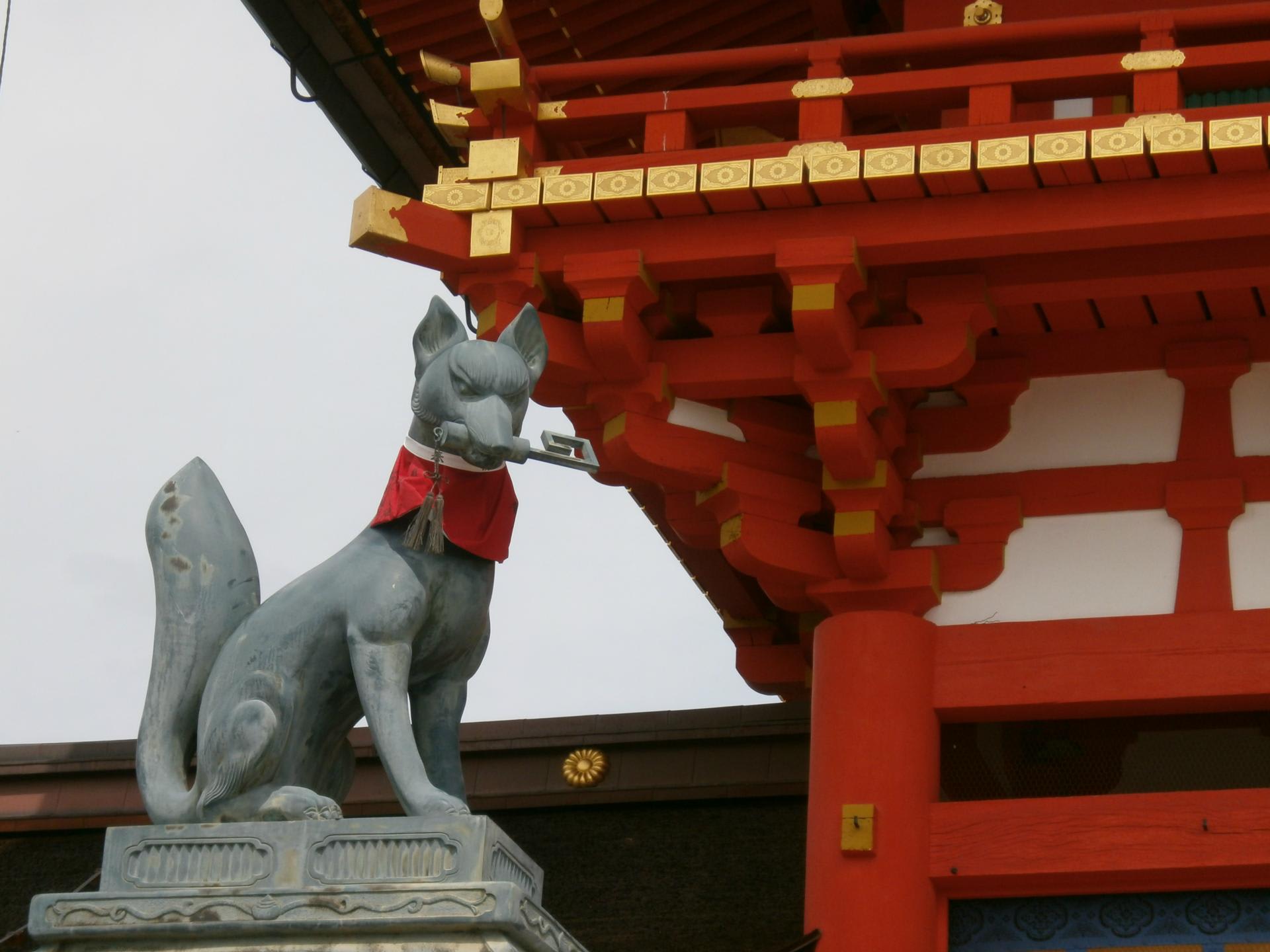 The statue of the fox at Fushimi Inari shrine (伏見稲荷大社, Fushimi Inari Taisha).
The statue of the fox at Fushimi Inari shrine (伏見稲荷大社, Fushimi Inari Taisha).Why is it a fox?
The Inari shrine is a Shinto shrine for the deity/god of rice. Inari is written in Kanji as 稲荷. The word literally translates to 'a sack of rice'; 稲 means 'rice' and 荷 means 'a sack'.
In Japanese, the word for rice is 'kome', and to fill or pack rice is 'komeru' or 'kome' for short.
So colloquially, medieval Japanese people alternately referred to the word 'Inari' as 'kome-kome' (rice that is packed).
In addition, a fox's call is said to sound like 'kom-kom' in Japanese culture. As a result, foxes are thought to be the shrine's messengers.
 A sack of rice is called "tawara(俵)". It is made of rice plant straws.(Ishiyamadera engi emaki(石山寺縁起絵巻).)
A sack of rice is called "tawara(俵)". It is made of rice plant straws.(Ishiyamadera engi emaki(石山寺縁起絵巻).)
Furthermore, owing to its definition, Inari-Sushi is created in the shape of a sack of rice.
(In translation to English, I got the teaching of Mrs.Y and her daughter. I express my gratitude.)
There is another related academic paper (Japanese version).















